- Home
- Mark R. Levin
Unfreedom of the Press Page 11
Unfreedom of the Press Read online
Page 11
Specifically, in 2010, the FBI spied on James Rosen, a then Fox News reporter, collecting his cell phone records, seizing two days of his personal emails, and using his State Department security badge to track his movements in and out of the department. The FBI also accused him of violating the Espionage Act of 1917, “at the very least, either as an aider, abettor and/or co-conspirator” with one of his government sources.43
James Risen, a reporter for the New York Times, was also treated as a coconspirator with a government source who was indicted by the Obama administration under the Espionage Act of 1917. Risen was subpoenaed; the government sought access to his phone and computer records, tried to compel him to testify against one of his sources, and for several years threatened him with imprisonment. Risen would later describe the Obama administration as “the greatest enemy of press freedom in a generation.”44
The Associated Press found that “[t]he Obama administration used the 1917 Espionage Act with unprecedented vigor, prosecuting more people under that law for leaking sensitive information to the public than all previous modern administrations combined. Obama’s Justice Department dug into confidential communications between news organizations and their sources as part of that effort.”45
In response to the Obama administration’s surveillance of the Associated Press, its CEO, Gary Pruitt, asserted that “[t]hese records potentially reveal communications with confidential sources across all of the newsgathering activities undertaken by the AP during a two-month period, provide a road map to AP’s newsgathering operations and disclose information about AP’s activities and operations that the government has no conceivable right to know.”46
The Obama administration also briefly entertained the idea of overseeing the content of radio programming because of the “structural imbalance” of such content. The draft proposal from the Federal Communications Commission’s legal department included a program that would place government monitors in newsrooms “to determine how stories were selected, whether there was bias in reporting,” and whether “critical information needs” were being met. If the program had been instituted, the “monitors would have been placed not only in broadcast newsrooms, but also print media outlets that the FCC had no regulatory authority over.”47
Even the Freedom of Information Act (FOIA) was intentionally abused to deny the press and other groups and individuals access to public information in executive branch departments and agencies, making the functioning of the vast bureaucracy transparent to the public. Politico’s Jack Shafer observed, among other things, that “[u]nder [the Obama] administration, the U.S. government has set a new record for withholding Freedom of Information Act requests, according to a recent Associated Press investigation. FOIA gives the public and press an irreplaceable view into the workings of the executive branch. Without timely release of government documents and data, vital questions can’t be answered and stories can’t be written.”48
No matter. For the vast majority of journalists, Obama’s transformative progressive agenda was paramount. And the Democratic party-press was mainly there to help him. Shafer wrote that at an awards ceremony for excellence in political reporting, Obama was the keynote speaker and praised journalists. Shafer noted that “[t]he last person in the world who should be lecturing journalists on how to do journalism is President Barack Obama. Yet there Obama was . . . at a journalism award ceremony, yodeling banalities about the role of a press in a free society, moaning over the dangers posed by ‘he said/she said’ reporting, and—to the delight of the assembled audience—attacking Donald Trump in every way but by name. The press-heavy crowd . . . clapped at Obama’s 30-minute address, encouraging his best Trump-baiting lines about ‘free media’ and the dangers of ‘false equivalence.’ What they should have done is bombard Obama with rotten fruit or ripped him with raspberries for his hypocrisy.”49
But they did not. Why?
Shafer, who dislikes Trump, stumbles around the point—that is, the journalists agreed with Obama’s politics and policies, just as earlier “working reporters” agreed with Roosevelt’s. Shafer writes: “Obama didn’t invent the White House’s in-house media shop, which produces videos and other media to disseminate approved ‘news’ to the public and the press. As long ago as the early 1930s, H. L. Mencken was complaining about how the Roosevelt administration’s press agents choked the information pipeline with mimeographed handouts that lazy reporters would then repurpose as news. But Obama’s White House has perfected the practice, with a 14-member operation called the White House Office of Digital Strategy that bypasses the press corps with tweets, YouTube videos, Facebook postings and more.”50
* * *
President Trump does not pose a threat to freedom of press, as did certain of his predecessors.
Newsrooms and journalists are not imperiled by the current president.
There are no known sedition-act efforts attacking speech and press freedom; no executive orders imprisoning reporters and shuttering newspapers; no FCC actions against broadcast stations; no unprecedented criminal charges against media organizations or reporters; no omnipresent propaganda operations; etc.
Nonetheless, the constant media refrain, whether from journalists or editorialists, trying to convince the American people of a demonstrably false narrative—that President Trump has launched an unprecedented battering on freedom of the press, thereby undermining the credibility of the institution of a free press and the First Amendment with the public—is media propaganda and a media-concocted pseudo-event. Unfortunately, too much of what the public reads, hears, and sees from the Democratic party-press fits this description.
FIVE
* * *
NEWS, PROPAGANDA, AND PSEUDO-EVENTS
GIVEN THE PROGRESSIVE ideology and Democratic Party attachment of most of the modern media and journalists, their commitment to “community” journalism and social activism, and with the integration of opinion and news making objective truth increasingly difficult to discern, is the public actually receiving predominantly news or propaganda or pseudo-information?
One of the keys to answering this question points to Edward Bernays. “Bernays,” one of his publishers tells us, “pioneered the scientific technique of shaping and manipulating public opinion, which he called ‘engineering consent.’ ”1 George Creel enlisted him into President Woodrow Wilson’s propaganda operation. Bernays was a nephew of Sigmund Freud and according to Christopher B. Daly was “a pioneer in theorizing about human thoughts and emotions. Bernays volunteered for the Committee on Public Information and threw himself into the work. His outlook—a mixture of idealism about the cause of spreading democracy and cynicism about the methods involved—was typical of many at the agency.”2
Bernays is considered in some quarters the founder of the contemporary public relations profession. He believed in the power of propaganda, and the manipulation and brainwashing of “the masses.” “The minority [that is, masterminds or elites] has discovered a powerful help in influencing majorities. It has been found possible so to mold the mind of the masses that they will throw their newly gained strength in the desired direction. In the present structure of society, this practice is inevitable. Whatever of social importance is done today, whether in politics, finance, manufacture, agriculture, charity, education, or other fields, must be done with the help of propaganda. Propaganda is the executive arm of the invisible government.”3
First and foremost, this means using the media, or the media exercising its own ideologically driven will, as a propaganda enterprise. “The extent to which propaganda shapes the progress of affairs about us,” wrote Bernays, “may surprise even well-informed persons. Nevertheless, it is only necessary to look under the surface of the newspaper for a hint as to propaganda’s authority over public opinion. Page one of the New York Times on the day these paragraphs are written contains eight important news stories. Four of them, or one-half, are propaganda. The casual reader accepts them as accounts of spontaneous happenings. Bu
t are they? Here are the headlines which announce them: ‘TWELVE NATIONS WARN CHINA REAL REFORM MUST COME BEFORE THEY GIVE RELIEF,’ ‘PRITCHETT REPORTS ZIONISM WILL FAIL,’ ‘REALTY MEN DEMAND A TRANSIT INQUIRY,’ and ‘OUR LIVING STANDARD HIGHEST IN HISTORY, SAYS HOOVER REPORT.’ ”4
How are they propaganda? Bernays writes:
Take them in order: the article on China explains the joint report of the Commission on Extraterritoriality in China, presenting an exposition of the Powers’ stand in the Chinese muddle. What it says is less important than what it is. It was “made public by the State Department today” with the purpose of presenting to the American public a picture of the State Department’s position. Its source gives it authority, and the American public tends to accept and support the State Department view. The report of Dr. Pritchett, a trustee of the Carnegie Foundation for International Peace, is an attempt to find the facts about this Jewish colony in the midst of a restless Arab world. When Dr. Pritchett’s survey convinced him that in the long run Zionism would “bring more bitterness and more unhappiness both for the Jew and for the Arab,” this point of view was broadcast with all the authority of the Carnegie Foundation, so that the public would hear and believe. The statement by the president of the Real Estate Board of New York, and Secretary Hoover’s report, are similar attempts to influence the public toward an opinion.5
For Bernays, propaganda was not troubling but in fact inevitable and useful. The public was not capable of enlightened thinking and decisions in a republic; therefore, they need to be led by those who supposedly are, or at least by those who self-servingly claim to be. He explained that “[t]hese examples are not given to create the impression that there is anything sinister about propaganda. They are set down rather to illustrate how conscious direction is given to events, and how the men behind these events influence public opinion. As such they are examples of modern propaganda.”6
Bernays argues that “[m]odern propaganda is a consistent, enduring effort to create or shape events to influence the relations of the public to an enterprise, idea or group. This practice of creating circumstances and of creating pictures in the minds of millions of persons is very common. Virtually no important undertaking is now carried on without it. . . .”7 According to Bernays, there is a new propaganda, which “takes account not merely of the individual, nor even of the mass mind alone, but also and especially of the anatomy of society, with its interlocking group formations and loyalties. It sees the individual not only as a cell in the social organism but as a cell organized into the social unit. Touch a nerve at a sensitive spot and you get an automatic response from certain specific members of the organism.”8
There is a despotic odor to Bernays’s elevation of propaganda as a righteous yet routine undertaking exercised for virtuous purposes by a supposedly intellectually astute and superior minority. The masses must be shepherded and managed, for their own good and the betterment of society. “The new propaganda,” Bernays explains, “having regard to the constitution of society as a whole, not infrequently serves to focus and realize the desires of the masses. . . . [C]learly it is the intelligent minorities which need to make use of propaganda continuously and systematically. In the active proselytizing minorities in whom selfish interests and public interests coincide lie the progress and development of America. Only through the active energy of the intelligent few can the public at large become aware of and act upon new ideas. . . .”9
A modern illustration of Bernays’s new propaganda in action was the selling of the Obama administration’s Iran nuclear deal. On May 5, 2016, in a long profile piece in the New York Times Sunday magazine, President Barack Obama’s deputy national security adviser, Ben Rhodes, bragged about his ability and success in deceiving the American people with a complicit press. The article was titled “The Aspiring Novelist Who Became Obama’s Foreign-Policy Guru: How Ben Rhodes Rewrote the Rules of Diplomacy for the Digital Age” and was written by David Samuels, who was seemingly both amused by and approving of Rhodes’s propaganda techniques.
Samuels wrote, in part, that “Rhodes’s innovative campaign to sell the Iran deal is likely to be a model for how future administrations explain foreign policy to Congress and the public. The way in which most Americans have heard the story of the Iran deal presented—that the Obama administration began seriously engaging with Iranian officials in 2013 in order to take advantage of a new political reality in Iran, which came about because of elections that brought moderates to power in that country—was largely manufactured for the purpose of selling the deal.”10
A main argument for negotiating with the Iran regime was “actively misleading” and regurgitated by journalists who wanted to support Obama’s policy. As Samuels reported: “In the narrative that Rhodes shaped, the ‘story’ of the Iran deal began in 2013, when a ‘moderate’ faction inside the Iranian regime led by Hassan Rouhani beat regime ‘hard-liners’ in an election and then began to pursue a policy of ‘openness,’ which included a newfound willingness to negotiate the dismantling of its illicit nuclear-weapons program. The president set out the timeline himself in his speech announcing the nuclear deal on July 14, 2015: ‘Today, after two years of negotiations, the United States, together with our international partners, has achieved something that decades of animosity has not.’ While the president’s statement was technically accurate—there had in fact been two years of formal negotiations leading up to the signing of the J.C.P.O.A.—it was also actively misleading, because the most meaningful part of the negotiations with Iran had begun in mid-2012, many months before Rouhani and the ‘moderate’ camp were chosen in an election among candidates handpicked by Iran’s supreme leader, the Ayatollah Ali Khamenei. The idea that there was a new reality in Iran was politically useful to the Obama administration.”11
No doubt Bernays would be impressed with the effectiveness of this propaganda.
Indeed, Samuels seemed to find virtue in the Obama administration’s successful propaganda campaign. “By obtaining broad public currency for the thought that there was a significant split in the regime, and that the administration was reaching out to moderate-minded Iranians who wanted peaceful relations with their neighbors and with America, Obama was able to evade what might have otherwise been a divisive but clarifying debate over the actual policy choices that his administration was making. . . .”12
Then came the conga line of experts, whose appearances were orchestrated and statements were scripted by Rhodes, who bragged about the ruse. “ ‘We created an echo chamber,’ Rhodes admitted, when I asked him to explain the onslaught of freshly minted experts cheerleading for the deal. ‘They were saying things that validated what we had given them to say.’ ”13
Rhodes would also plant the administration’s talking points with journalists, some of whom would repeat them verbatim. “In this environment,” wrote Samuels, “Rhodes has become adept at ventriloquizing many people at once. Ned Price, Rhodes’s assistant, gave me a primer on how it’s done. The easiest way for the White House to shape the news, he explained, is from the briefing podiums, each of which has its own dedicated press corps. ‘But then there are sort of these force multipliers,’ he said, adding, ‘We have our compadres, I will reach out to a couple people, and you know I wouldn’t want to name them—’ ”14 Media “compadres,” also known as journalists who were ideological soul mates and willing to report the administration’s message as news.
Samuels and Price are insiders who know how the propaganda game is played. Samuels replied to Price: “ ‘I can name them [the reporters],’ I said, ticking off a few names of prominent Washington reporters and columnists who often tweet in sync with White House messaging.’ Price laughed. ‘I’ll say, Hey, look, some people are spinning this narrative that this is a sign of American weakness,’ he continued, ‘but—’ ”15
Samuels, entertained by it all, interrupted: “ ‘In fact it’s a sign of strength!’ I said, chuckling.” Price continued, “ ‘And I’ll give them some c
olor and the next thing I know, lots of these guys are in the dot-com publishing space, and have huge Twitter followings, and they’ll be putting this message out on their own.’ ”16
Bernays’s description of the new propaganda is also on display throughout the 24/7 news cycle. Another particularly barefaced example occurred on Sunday, December 30, 2018, when Chuck Todd, host of NBC’s Meet the Press and NBC’s political director, issued an on-air proclamation to the nation, followed by a full hour of one-sided propaganda, in which Todd asserted that man-made climate change is a scientific fact, and he would not allow the voices of “climate-deniers” (an offensive term to many, as it is coined after the reference to Holocaust deniers) to be heard now or in the future. He stated:
This morning, we’re going to do something that we don’t often get to do, dive in on one topic. It’s obviously extraordinarily difficult to do this, as the end of this year has proven, in the era of Trump. But we’re going to take an in-depth look, regardless of that, at a literally Earth-changing subject that doesn’t get talked about this thoroughly on television news, at least, climate change. But just as important as what we are going to do this hour is what we’re not going to do. We’re not going to debate climate change, the existence of it. The Earth is getting hotter. And human activity is a major cause, period. We’re not going to give time to climate deniers. The science is settled, even if political opinion is not. And we’re not going to confuse weather with climate. A heat wave is not more evidence that climate change exists than a blizzard means that it doesn’t, unless the blizzard hits Miami. We do have a panel of experts with us today to help us understand the science and consequences of climate change and, yes, ideas to break the political paralysis over it.17
Todd and his NBC producers and researchers know, as a matter of fact, that there are many legitimate, credentialed, and serious scientists and climate experts who are either skeptical of or outright reject the claims of man-made climate change. Several are academicians, work at think-tanks, have produced statistical studies, written significant books, etc. Some question the accuracy of certain research; or the sources of global warming; or whether global warming is occurring; or the role of mankind in global warming; or whether any of this actually matters; or whether a slight increase in warming is actually beneficial to the planet (as it increases plant growth, etc.).18

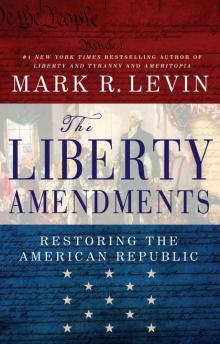 The Liberty Amendments: Restoring the American Republic
The Liberty Amendments: Restoring the American Republic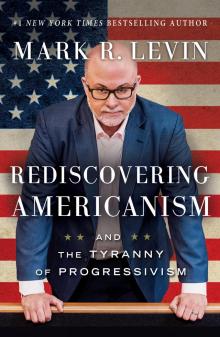 Rediscovering Americanism: And the Tyranny of Progressivism
Rediscovering Americanism: And the Tyranny of Progressivism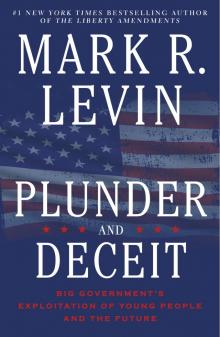 Plunder and Deceit: Big Government's Exploitation of Young People and the Future
Plunder and Deceit: Big Government's Exploitation of Young People and the Future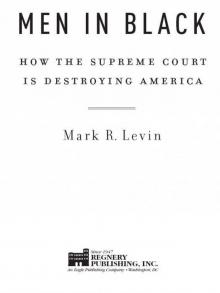 Men in Black: How Judges Are Destroying America
Men in Black: How Judges Are Destroying America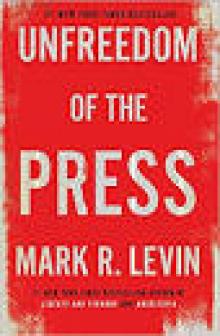 Unfreedom of the Press
Unfreedom of the Press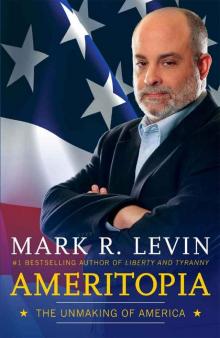 Ameritopia: The Unmaking of America
Ameritopia: The Unmaking of America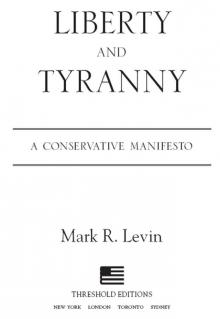 Liberty and Tyranny
Liberty and Tyranny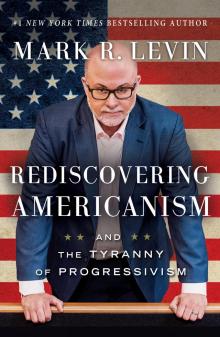 Rediscovering Americanism
Rediscovering Americanism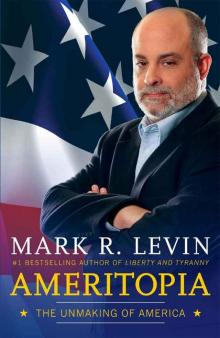 Ameritopia
Ameritopia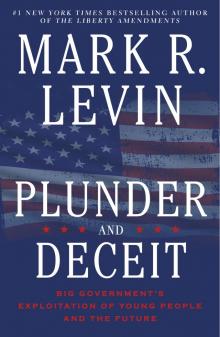 Plunder and Deceit
Plunder and Deceit